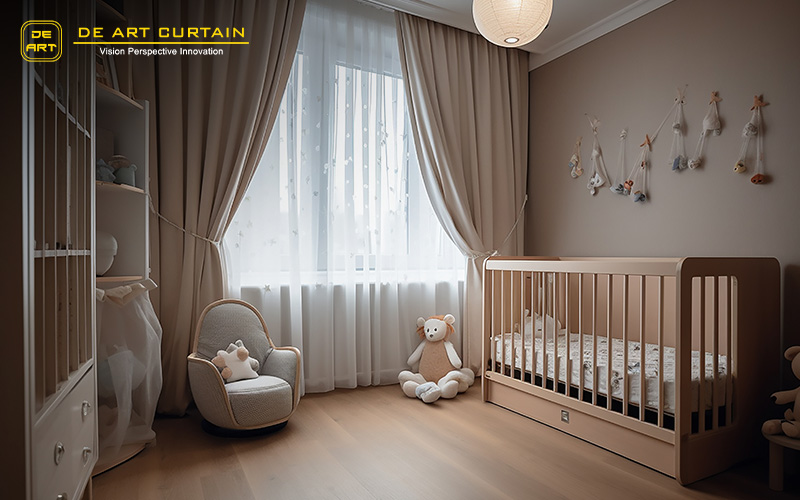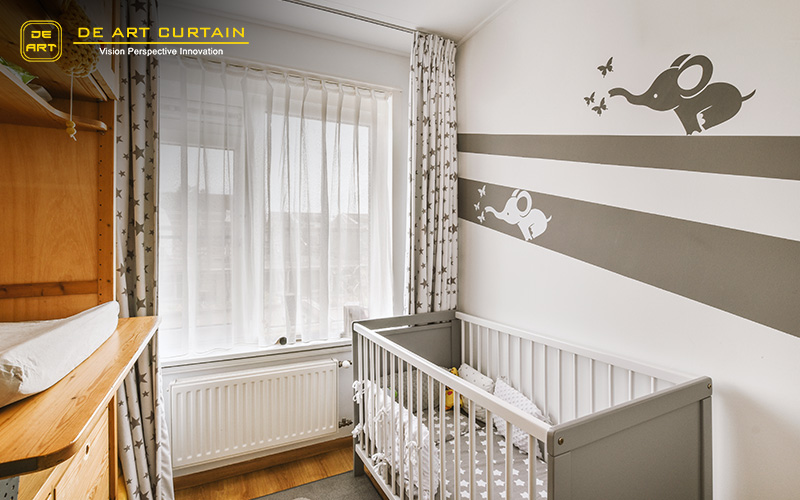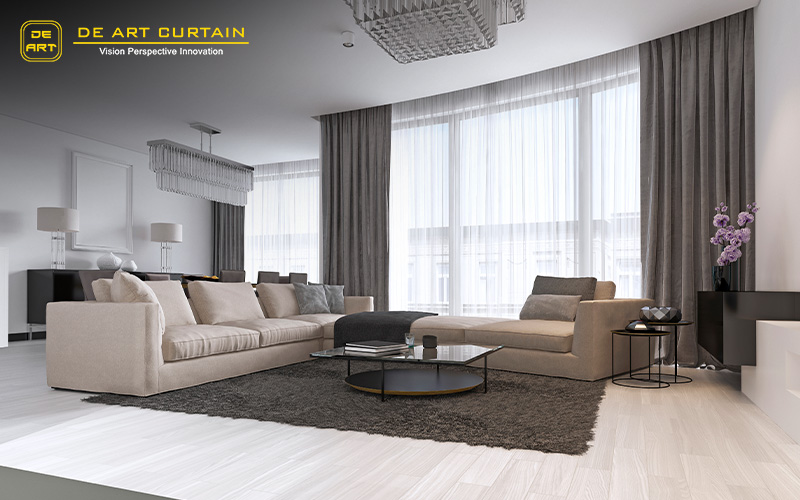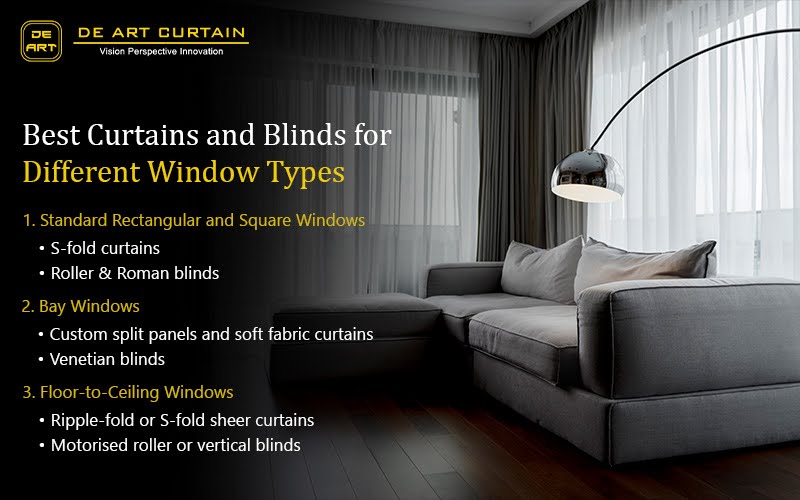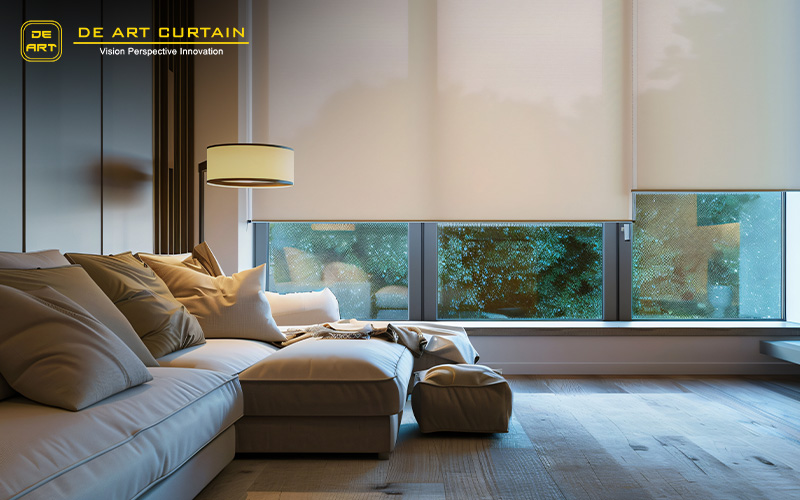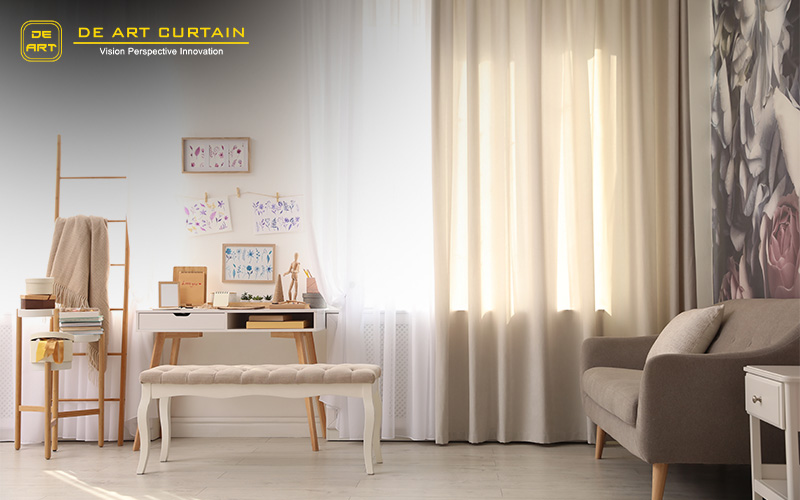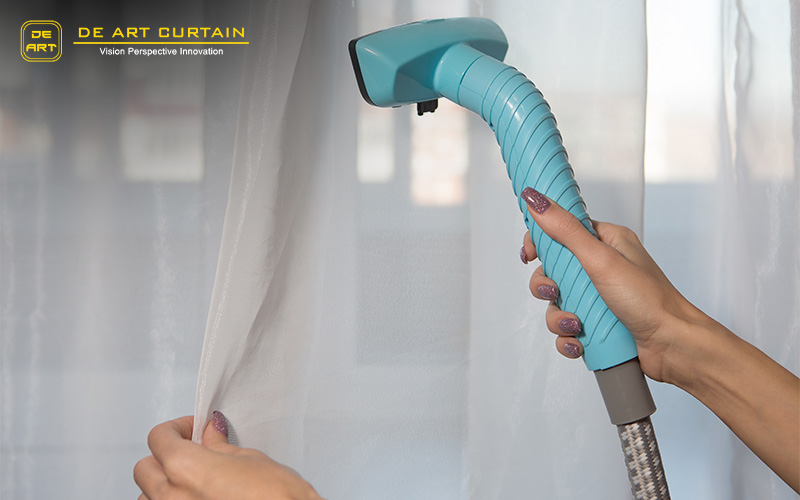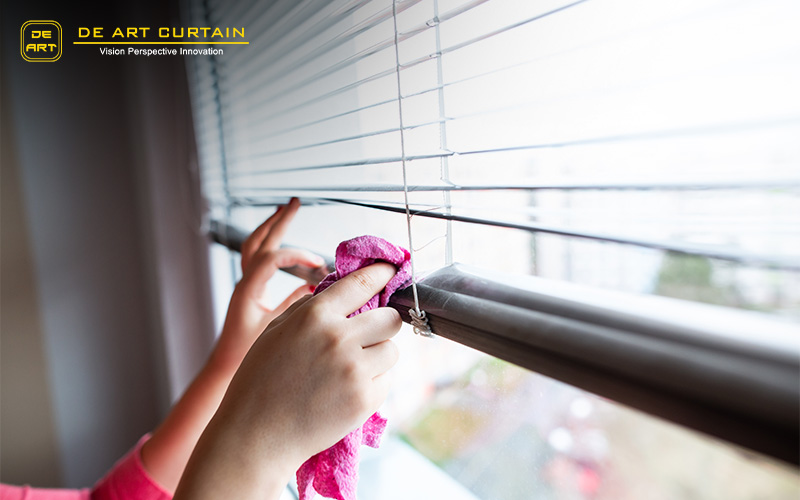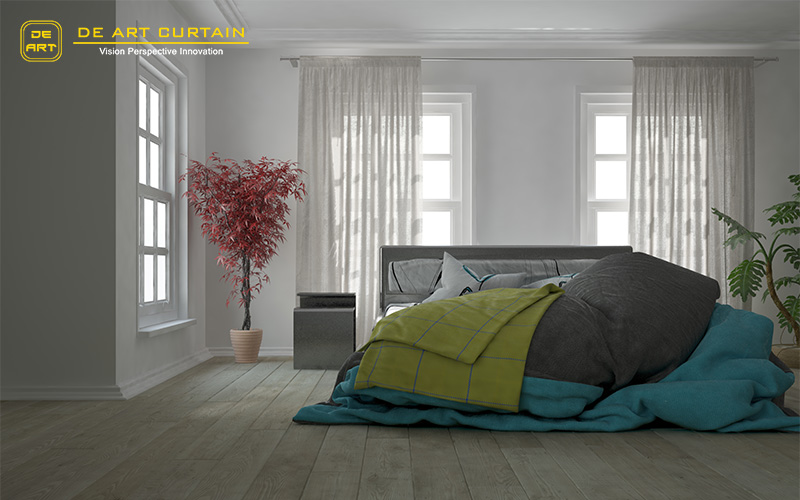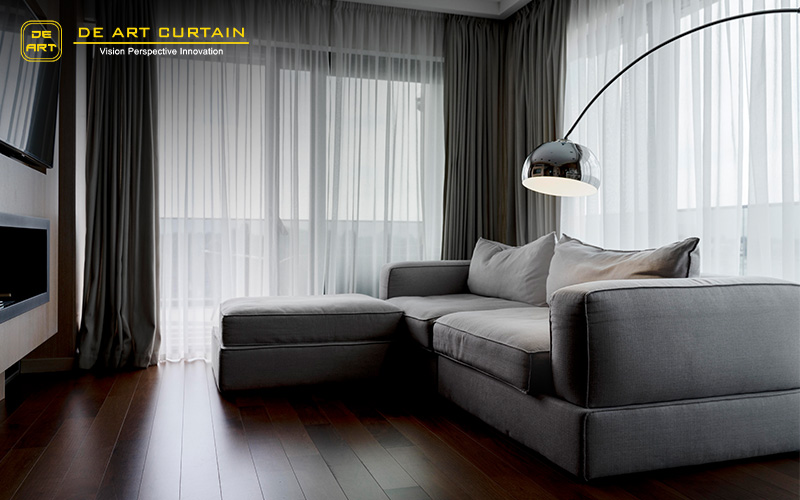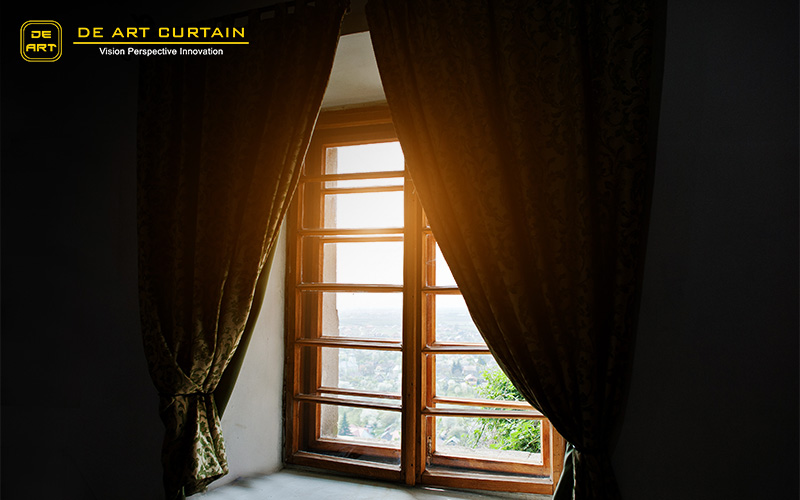Have you ever stood in front of your windows wondering whether curtains or blinds would work better? You’re not alone. In Singapore, where homes range from compact HDB units to spacious landed properties, finding the right blinds and curtains for your windows is both an art and a science. This guide will help you make sense of it all, offering practical ideas for different window types, explaining the benefits of popular choices, and sharing tips to keep everything in top condition.
Key Takeaways
- Standard, bay, and floor-to-ceiling windows each require unique curtain and blind types and combinations for optimal style, privacy, and light control.
- Regular cleaning, such as vacuuming, wiping, or professional services, helps extend the life of your window treatments and maintains indoor air quality.
- Proper handling and annual servicing for motorised systems will also help everything run smoothly.
- Working with experienced professionals like De Art Studio can simplify the process and ensure you get window treatments that are both functional and beautiful.
Best Curtains and Blinds for Different Window Types
Standard Rectangular and Square Windows
Standard rectangular and square windows are by far the most common window shapes in homes across Singapore. Their simple geometry makes them incredibly versatile, accommodating a wide range of window curtains and blinds.
Recommended Window Treatments:
- For Curtains: S-fold curtains create the illusion of added height and bring a sleek, modern look to the space with their soft, uniform folds.
- For Blinds: Options such as roller shades offer a minimalist style with practical light filtering. This makes them an ideal, modern choice for small living rooms, home offices, or even kitchens.
Styling Tips:
- Fabrics and Colours: To accommodate Singapore’s tropical climate, choose light, breathable fabrics, such as cotton or linen, for day curtains. Colours like white, sand, taupe, or light grey also help reflect heat and keep interiors cool while maintaining a bright, airy feel.
- Pattern Matching vs. Contrasting: For a cohesive look, match window curtain and blind patterns with your existing furniture or soft furnishings. For example, in more modern or eclectic interiors, bold geometric or botanical prints can serve as a striking contrast against neutral walls.
- Hardware Considerations: The rods or tracks you use for your curtains matter more than you think. For a modern touch, consider matte black or brushed metal finishes. In smaller rooms, recessed or ceiling-mounted tracks help create the illusion of height and reduce visual clutter.
Blinds and Curtain Ideas for Bay Windows
Bay windows are a common architectural feature, especially in master bedrooms and reading corners. Their outward-protruding design allows for more natural light and creates a charming alcove within the room. However, their angled structure and multiple panes mean that standard window curtains and blinds often fall short, making tailored solutions essential.
Recommended Window Treatments:
- For Curtains: Custom-designed curtains work best. Curved or segmented tracks with split curtain panels make it easy to cover each section of the window separately while maintaining full functionality. Make sure to choose fabrics that drape well, such as cotton blends or soft linens. For added versatility, a double curtain setup—combining sheer fabric for daylight filtering and blockout fabric for nighttime privacy—is a practical and stylish solution.
- For Blinds: Install Venetian blinds within each individual window frame. These offer excellent control over light and privacy while contributing to a warm, sophisticated look.
Styling Tips:
- Layering for Depth and Elegance: Combine sheer day curtains for light diffusion with heavier drapes for privacy and drama. This layered approach softens the architectural angles of bay windows and enhances their visual depth.
- Light Control and Texture: Opt for luxurious materials like linen, velvet, or light wool for curtains. These not only block light more effectively but also add a tactile quality to the space.
- Enhance Functionality: Maximise the functionality of your bay windows by converting the area into a cosy reading nook or lounging area. You can also pair your window treatments with plush seat cushions and decorative pillows that match or contrast with your chosen curtain fabric.
Floor-to-Ceiling Windows
Floor-to-ceiling windows are a striking feature in modern condominiums and luxury residences in Singapore. They open up the space, invite in abundant natural light, and offer breathtaking views of city skylines or lush landscapes. However, these windows also present unique challenges when it comes to managing heat, glare, and privacy.
Recommended Window Treatments:
- For Curtains: For daytime elegance, choose full-length ripple-fold or S-fold curtains made of sheer materials. You could also pair these with heavier blackout curtains or thermal drapes to enhance privacy and reduce indoor temperatures whenever needed.
- For Blinds: Automated blinds, such as motorised roller or vertical shades, are particularly suitable for tall, hard-to-reach windows. They provide easy operation, effective light management, and a clean, streamlined look.
Styling Tips:
- Combining Treatments for Functionality: Install sunscreen roller blinds to filter out harsh sunlight and UV rays during the day while preserving your view. For added softness and style, consider layering with sheer or decorative curtains.
- Bold Fabrics and Statement Prints: Don’t be afraid to go bold with your window curtains and blinds. Floor-to-ceiling windows provide ample surface area for showcasing rich textures, vibrant hues, or designer patterns. This can turn the entire window wall into a visual centrepiece.
Maintaining and Caring for Curtains and Blinds
Investing in high-quality curtains and blinds for your windows is only the first step. To truly enjoy their full value, you’ll want to take steps to ensure they remain durable and functional over time. Here are some window treatment maintenance tips to keep them looking their best for years to come.
How to Extend the Lifespan of Your Window Curtains and Blinds
1. Choose Durable Materials
When selecting curtains, opt for fabrics that are not only aesthetically pleasing but also resilient in Singapore’s humid environment. For example, polyester blends, high-thread-count cottons, and linen-cotton mixes are excellent choices for longevity. These materials are less prone to shrinking, fading, and mildew, making them ideal for living rooms, bedrooms, and kitchens.
If you’d like a refined look with dependable durability, timber Venetian blinds are a popular option. These blinds, crafted from quality wood or faux wood, are resistant to moisture damage when properly sealed. Aluminium or PVC blinds are also practical choices for high-humidity areas like bathrooms and laundry rooms, where frequent ventilation is needed.
2. The Importance of Proper Installation
Professional curtain and blind installation plays a key role in ensuring they not only look great but also function reliably over time. When installed correctly, they will sit evenly, glide smoothly, and withstand daily use with minimal wear. In contrast, poor installation can result in sagging fabric, misaligned blinds, or premature mechanical failure.
This is especially important for motorised or automated options, as these systems typically require precise calibration to avoid issues such as gear misalignment, remote control failures, or uneven lifting. Engaging experienced professionals ensures your window blinds and curtains are installed with accuracy and care, giving you peace of mind and long-lasting performance.
3. Prevent Bending, Warping, or Wear
Avoid placing furniture too close to your blinds, especially if they are made of wood, plastic, or other warp-prone materials. This helps ensure air circulation and protects the slats from pressure damage.
When drawing curtains, use both hands or pull from the centre to distribute tension evenly across the rod or track. For added protection, use curtain tiebacks to reduce stress on the fabric and keep the window area tidy.
For floor-to-ceiling window treatments, make sure the fabric slightly hovers above the floor to avoid fraying and maintain a neat, polished appearance.
4. Opt for Trusted Brands with High-Quality Products
When it comes to long-term durability, investing in well-established, high-quality brands can make a significant difference. Premium brands often offer better craftsmanship, tested materials, and enhanced functionality that cheaper alternatives may lack.
For example, Hunter Douglas Duette® honeycomb shades are known for their exceptional build quality and innovative design. Their signature cellular structure not only improves insulation and energy efficiency but also ensures that the shades maintain their shape and performance over time.
By choosing reputable brands for your window blinds and curtains, you gain the assurance of reliable performance, professional support, and long-lasting style. High-quality window treatments are an investment in comfort, functionality, and peace of mind for your home.
Cleaning and Care Tips for Curtains and Blinds
Regular upkeep not only keeps your window curtains and blinds looking their best but also contributes to better indoor air quality. Here’s how to properly care for different types of materials:
Tips for Cleaning Curtains
- Dust and Vacuum Weekly: Use a handheld vacuum with a soft brush attachment or a lint roller to remove surface dust and pet hair from day curtains and sheers. A soft-bristled vacuum ensures fibres remain intact for heavier fabrics like velvet or jacquard.
- Machine Wash with Caution: While most cotton, polyester, or blended curtains are machine washable, it’s important to always check the care label first. Wash on a gentle cycle and make sure to skip the bleach, as it can damage the fabric and cause colours to fade.
- Hand-Washing Delicate Fabrics: For delicate materials like silk or lace, hand-wash in lukewarm water using a gentle, pH-neutral detergent. Soak briefly, rinse thoroughly, and lay flat or hang to dry. Avoid wringing the fabric, which may cause distortion or permanent creases.
- Drying: Air-dry your curtains whenever possible, but keep them out of direct sunlight to prevent colour fading. For quicker drying, use a fan in a well-ventilated space.
Tips for Cleaning Blinds
- Venetian Blinds: Tilt the blinds shut and wipe them down with a damp cloth. For built-up grime, mix a solution of mild dish soap and water (1:10 ratio) and gently clean each slat.
- Roller Blinds: Most roller blinds can be wiped clean with a wet cloth. For fabric-based models, check if the material is removable and machine washable. Avoid soaking the roller mechanism to prevent rust or malfunction.
- Vertical Blinds: Detach fabric vanes for easier cleaning. Wash synthetic panels using a gentle machine cycle or spot-clean with a sponge and mild soap. For non-fabric blinds, simply wipe both sides with a damp cloth.
Deep Cleaning and Professional Care
- Heavy Drapes & Speciality Fabrics: Thick drapes, layered curtains, or those made from high-end materials such as silk, velvet, or wool should be professionally cleaned to maintain their quality. Improper home cleaning may lead to shrinkage, distortion, or water stains.
- Motorised Blinds and Automated Systems: For automated blinds, annual servicing is recommended. This ensures that motors, remote controls, and smart systems remain functional and energy-efficient.
- Curtain Tracks and Accessories: Don’t forget the hardware! Clean curtain rods, tiebacks, and track systems regularly to prevent dust from accumulating. If your curtains start sticking or dragging, use silicone spray or dry lubricant on the tracks.
Frequently Asked Questions About Window Curtains and Blinds
What is the difference between curtains and blinds, and which is better for my windows?
Curtains offer a soft, layered look with better sound insulation and warmth, making them ideal for bedrooms and living rooms. Window blinds are sleek and modern, offering precise light control, especially in kitchens and study rooms. Many homeowners in Singapore prefer a combination—day curtains for softness and roller blinds for light control.
How do I deal with wrinkles in my curtains?
Use a garment steamer to gently remove wrinkles. Alternatively, iron on a low setting with a protective cloth between the iron and the fabric. Hanging curtains while slightly damp can also help them straighten naturally.
How can I fix or replace broken blind slats?
Most blind slats—especially those in Venetian blinds—are replaceable. Simply remove the broken slat and slide in a new one. For fabric vertical blinds, damaged panels can often be ordered individually or replaced by a professional technician.
The Final Layer: Making the Most of Your Window Curtains and Blinds
Choosing the right blinds and curtains for your windows is about aligning function, comfort, and aesthetics. Each window type, whether standard, bar, or floor-to-ceiling, requires a thoughtful approach to materials, installation, and styling. To ensure your window treatments not only enhance your space but also stand the test of time, regular care and maintenance are essential.
At De Art Studio, we understand how overwhelming it can be to choose the perfect curtains and blinds for your windows. With 4 years of experience, our team of passionate design consultants is ready to guide you every step of the way—from selecting materials and fabrics to expert installation in Singapore.
Book your first consultation with us today.
